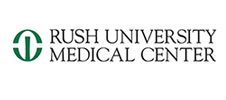Biologics
Platelet-Rich Plasma Versus Alternative Injections for Osteoarthritis of the Knee
Background: Based in part on the results of randomized controlled trials (RCTs) that suggest a beneficial effect over alternative treatment options, the use of platelet-rich plasma (PRP) for the management of knee osteoarthritis (OA) is widespread and increasing. However, the extent to which these studies are vulnerable to slight variations in the outcomes of patients remains unknown.
The Effectiveness of Leukocyte-Poor Platelet-Rich Plasma Injections for Symptomatic Mild to Moderate Osteoarthritis of the Knee With Joint Effusion or Bone Marrow Lesions in a Japanese Population
Background: Intra-articular platelet-rich plasma (PRP) injections have been proposed for the treatment of knee osteoarthritis (OA); however, their effectiveness in Japanese patients remains unclear.
Platelet-Rich Plasma Has Better Results for Long-term Functional Improvement and Pain Relief for Lateral Epicondylitis
Background: Corticosteroids (CS) have shown good short-term performance in terms of pain relief and functional improvement. However, the safety and long-term efficacy of this treatment remains controversial. Several studies have reported good results of platelet-rich plasma (PRP) in the treatment of tendinopathies. However, whether its use in the treatment of lateral epicondylitis (LE) is superior to that of CS remains controversial.
The Effect of Platelet-Rich Plasma Leukocyte Concentration on Arthroscopic Rotator Cuff Repair
Background: It is unclear whether leukocyte-poor (LP) or leukocyte-rich (LR) varieties of platelet-rich plasma (PRP) as an adju- vant to arthroscopic rotator cuff repair (ARCR) result in improved tendon healing rates.
Three Doses of Platelet-Rich Plasma Therapy Are More Effective Than One Dose of Platelet-Rich Plasma in the Treatment of Knee Osteoarthritis: A Systematic Review and Meta-analysis
Purpose: To compare the efficacy of a single dose of platelet-rich plasma (PRP) with multiple doses of PRP therapy in the treatment of knee osteoarthritis (KOA).
Platelet-Rich Plasma Injection Can Be a Viable Alternative to Corticosteroid Injection for Conservative Treatment of Rotator Cuff Disease: A Meta-analysis of Randomized Controlled Trials
Purpose: To explore whether platelet-rich plasma (PRP) injection can be a viable alternative to corticosteroid (CS) injection for conservative treatment of rotator cuff disease.
Effectiveness of Platelet-Rich Plasma for Lateral Epicondylitis: A Systematic Review and Meta-analysis Based on Achievement of Minimal Clinically Important Difference
Purpose: To evaluate the effectiveness of PRP in lateral epicondylitis treatment using minimal clinically important difference (MCID) values as a reference and to investigate if leukocyte content can influence the effectiveness of the therapy.
Bone Marrow Aspirate Concentrate Is Equivalent to Platelet-Rich Plasma for the Treatment of Knee Osteoarthritis at 2 Years
Purpose: The Purpose of this study was to compare the efficacy of BMC and PRP on pain and function in patients with knee osteoarthritis up to 24 months after injection. It was hypothesized that patients receiving BMC would have better sustained outcomes than those receiving PRP.
Does the Use of Platelet-Rich Plasma at the Time of Surgery Improve Clinical Outcomes in Arthroscopic Rotator Cuff Repair When Compared With Control Cohorts? A Systematic Review of Meta-analyses
Purpose: The aims of the study were as follows: (1) to perform a systematic review of meta-analyses evaluating platelet-rich plasma (PRP) use at the time of arthroscopic rotator cuff repair surgery and to determine its effect on retear rates and clinical outcomes; (2) to provide a framework for the analysis and interpretation of the best currently available evidence; and (3) to identify gaps within the literature where suggestions for continued investigational efforts would be valid.
Subacromial Platelet Rich Plasma Injections Decrease Pain and Improve Functional Outcomes in Patients with Refractory Rotator Cuff Tendinopathy
Purpose: The Purpose of this study was to evaluate the effect of subacromial platelet-rich plasma injections in patients with refractory rotator cuff tendinopathies based on: 1) pain improvement, 2) functional outcomes; 2) sleep disturbances; 4) return to sports to the same level as before the injury.
Intra-Articular Platelet-Rich Plasma Combined With Hyaluronic Acid Injection for Knee Osteoarthritis Is Superior to Platelet-Rich Plasma or Hyaluronic Acid Alone in Inhibiting Inflammation and Improving Pain and Function
Purpose: To evaluate the effectiveness and explore the therapeutic mechanisms of platelet-rich plasma (PRP) combined with hyaluronic acid (HA) as a treatment for knee osteoarthritis (KOA).
Safety and Efficacy of an Amniotic Suspension Allograft Injection over 12 Months in a Single-Blinded, Randomized Controlled Trial for Symptomatic Osteoarthritis of the Knee
Purpose: The Purpose of this study is to determine the efficacy of amniotic suspension allograft (ASA) compared to hyaluronic acid (HA) and saline at up to 12 months of follow-up through the use of patient-reported outcomes, immunoglobulin levels, and anti-HLA levels.
Intra-Articular Injections of Platelet-rich plasma, Adipose mesenchymal stem cells and Bone marrow mesenchymal stem cells Associated With Better Outcomes than Hyaluronic acid and Saline in Knee Osteoarthritis: A systematic review and network meta-analysis
Purpose: To perform a network meta-analysis to evaluate clinical efficacy and treatment related adverse events (AEs) of intra-articular hyaluronic acid (HA), leukocyte-poor platelet-rich plasma (LP-PRP), leukocyte-rich platelet-rich plasma (LR-PRP), bone marrow mesenchymal stem cells (BM-MSCs), adipose mesenchymal stem cells (AD-MSCs) and saline (placebo) during 6 and 12 months of follow-up.
Platelet-rich plasma combined with hyaluronic acid improves pain and function compared with hyaluronic acid alone in knee osteoarthritis: A systematic review and meta-analysis
Purpose: To evaluate the efficacy of platelet-rich plasma (PRP) combined with hyaluronic acid (HA) injections versus HA injections alone for the management of knee osteoarthritis.
Platelet-Rich Plasma in Patients With Partial-Thickness Rotator Cuff Tears or Tendinopathy Leads to Significantly Improved Short-Term Pain Relief and Function Compared With Corticosteroid Injection: A Double-Blind Randomized Controlled Trial
Purpose: To perform a randomized controlled trial comparing platelet-rich plasma (PRP) with standard corticosteroid (CS) injection in providing pain relief and improved function in patients with rotator cuff tendinopathy and partial-thickness rotator cuff tears (PTRCTs).
Intra-Articular Platelet-Rich Plasma Combined With Hyaluronic Acid Injection for Knee Osteoarthritis Is Superior to Platelet-Rich Plasma or Hyaluronic Acid Alone in Inhibiting Inflammation and Improving Pain and Function
Purpose: To evaluate the effectiveness and explore the therapeutic mechanisms of platelet-rich plasma (PRP) combined with hyaluronic acid (HA) as a treatment for knee osteoarthritis (KOA).
Platelet Rich Plasma Versus Hyaluronic Acid in the Treatment of Knee Osteoarthritis: a Meta-Analysis of 26 randomized controlled trials
Purpose: The aim of this study was to compare the effectiveness and safety of platelet-rich plasma (PRP) and hyaluronic acid (HA) in adult knee osteoarthritis (KOA) patients and to explore the most effective and safe protocol by using a meta-analysis method.
Platelet-Rich Plasma Is an Equal Alternative to Surgery in the Treatment of Type 1 Medial Epicondylitis
Background: Medial epicondylitis (ME) is characterized as an overuse injury resulting in pathological alterations of the common flexor tendon at the elbow. Platelet-rich plasma (PRP) has recently become of interest in the treatment of musculoskeletal conditions as an alternative to operative management.
Platelet-Rich Plasma Versus Hyaluronic Acid for Knee Osteoarthritis: A Systematic Review and Meta-analysis of Randomized Controlled Trials.
Background: Platelet-rich plasma (PRP) and hyaluronic acid (HA) are 2 nonoperative treatment options for knee osteoarthritis (OA) that are supposed to provide symptomatic relief and help delay surgical intervention.
Multiple Platelet-Rich Plasma Injections Versus Single Platelet-Rich Plasma Injection in Early Osteoarthritis of the Knee: An Experimental Study in a Guinea Pig Model of Early Knee Osteoarthritis.
Background: Platelet-rich plasma (PRP) has emerged as the forerunner among disease-modifying treatment options for early osteoarthritis (OA) of the knee. However, no consensus is available regarding optimum dosing schedules.
Platelet-Rich Plasma Reduces Failure Risk for Isolated Meniscal Repairs but Provides No Benefit for Meniscal Repairs With Anterior Cruciate Ligament Reconstruction
Background: The effect of platelet-rich plasma (PRP) on the risk of meniscal repair failure is unclear. Current evidence is limited to small studies without comparison between isolated repairs and meniscal repairs with concomitant anterior cruciate ligament (ACL) reconstruction. It is also unclear whether the efficacy of PRP differs between preparation systems in the setting of meniscal repair.
Platelet-Rich Plasma Versus Hyaluronic Acid Injections for the Treatment of Knee Osteoarthritis
Purpose: To compare the long-term clinical outcomes provided by intra-articular injections of either PRP or hyaluronic acid (HA) to treat knee degenerative disease.
Leucocyte-Rich Platelet-Rich Plasma Treatment of Gluteus Medius and Minimus Tendinopathy
Purpose: This follow-up study was conducted to determine whether there would be a sustained long-term difference in the modified Harris Hip Score (mHHS) at 2 years for a leucocyte-rich PRP (LR-PRP) injection in the treatment of chronic gluteal tendinopathy.
Exercise-Mobilized Platelet-Rich Plasma: Short-Term Exercise Increases Stem Cell and Platelet Concentrations in Platelet-Rich Plasma.
Purpose: To evaluate the effects of vigorous short-term exercise on the platelet and other cellular components of 2 point-of-care blood-processing devices: a buffy coat-based platelet-rich plasma (PRP) product and a plasma-based PRP product.
Short-term Changes After Corticosteroid Injections Into the Normal Tendons of Rabbits: A Controlled Randomized Study.
Background: Corticosteroid injections in or around tendons for the treatment of athletic injuries are a common practice among orthopaedic surgeons and are apparently efficacious in the short term, although controversies persist related to local complications.
The Clinical Evidence Behind Biologic Therapies Promoted at Annual Orthopaedic Meetings: A Systematic Review
Purpose: The Purpose of this study is to systematically evaluate the available clinical data for biologic therapies pro- moted for articular cartilage defects and osteoarthritis of the knee at the 2016 American Orthopaedic Society for Sports Medicine Meeting (AOSSM) and the 2017 Arthroscopy Association of North America meeting (AANA).
Injective mesenchymal stem cell-based treatments for knee osteoarthritis: from mechanisms of action to current clinical evidences.
Purpose: Osteoarthritis (OA) represents a relevant social and economic burden worldwide. "Mesenchymal stem cells" or, as recently proposed, "medicinal signaling cells" (MSCs) have been recently introduced as injective treatments for OA with the aim of restoring joint homeostasis. The aim of this review is to provide the reader with the tools necessary to interpret the currently available clinical data, focusing on the MSC mechanisms of action which might help to clarify what we should expect from this treatment.
Comparative Matched-Pair Analysis of Open-Wedge High Tibial Osteotomy With Versus Without an Injection of Adipose-Derived Mesenchymal Stem Cells for Varus Knee Osteoarthritis: Clinical and Second-Look Arthroscopic Results.
Background: High tibial osteotomy (HTO) is reported to be an effective treatment for varus knee osteoarthritis (OA) by redistributing the load line within the knee joint. The cell-based tissue engineering approach using mesenchymal stem cells (MSCs) has addressed the issue of articular cartilage repair in knee OA.
Defining Platelet-Rich Plasma Usage by Team Physicians in Elite Athletes.
Background: The indications for the use of platelet-rich plasma (PRP) are vaguely defined despite the frequency of its use as a treatment for athletes. While select studies have advocated for its efficacy, the majority of orthopaedic research conducted on the topic has been equivocal.
The Efficacy of Platelet-Rich Plasma on Tendon and Ligament Healing: A Systematic Review and Meta-analysis With Bias Assessment.
Background: There has been a surge in high-level studies investigating platelet-rich plasma (PRP) for tendon and ligament injuries. A number of meta-analyses have been published, but few studies have focused exclusively on tendon and ligament injuries.

















